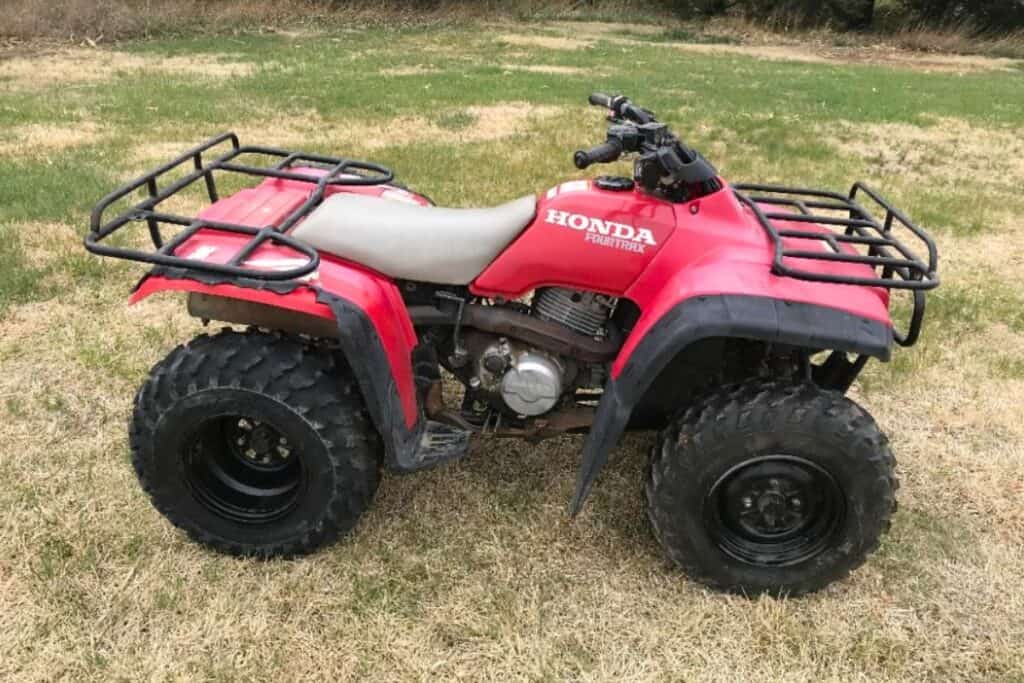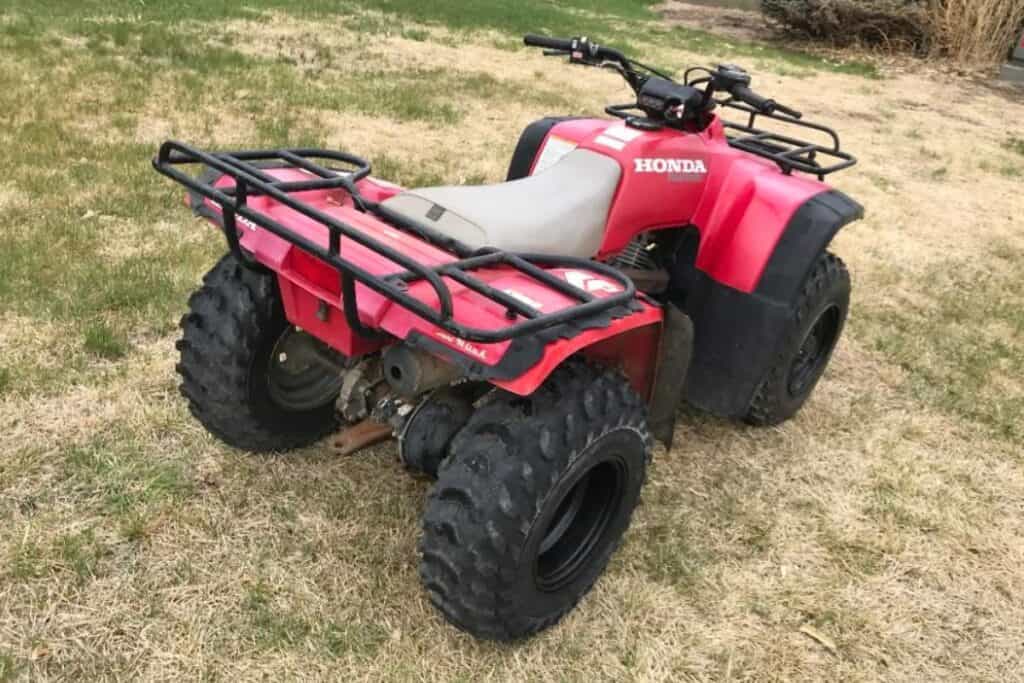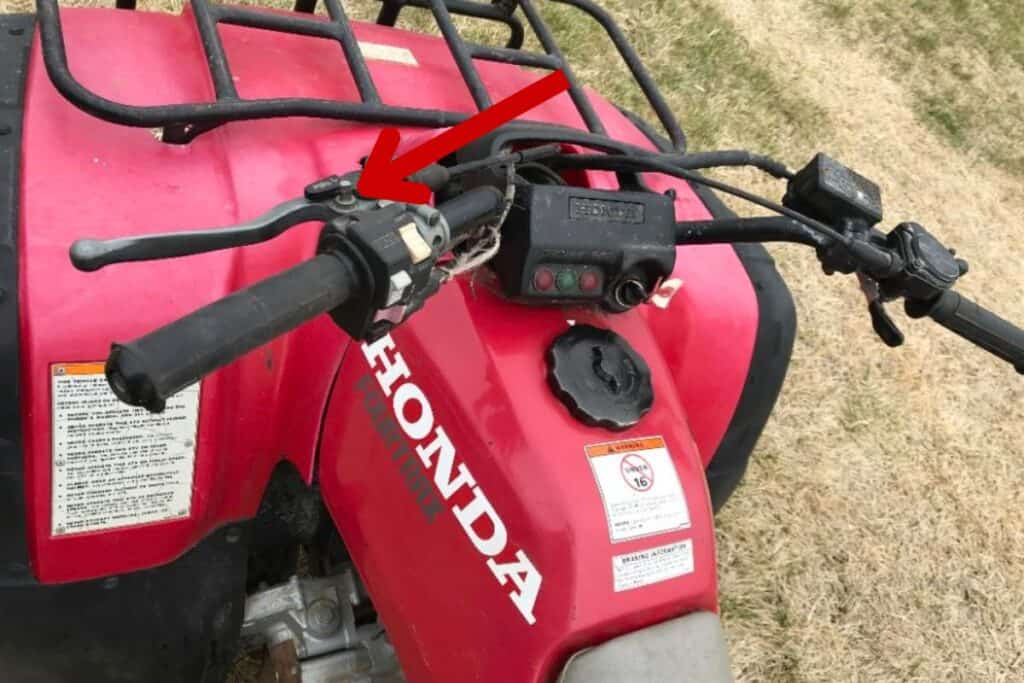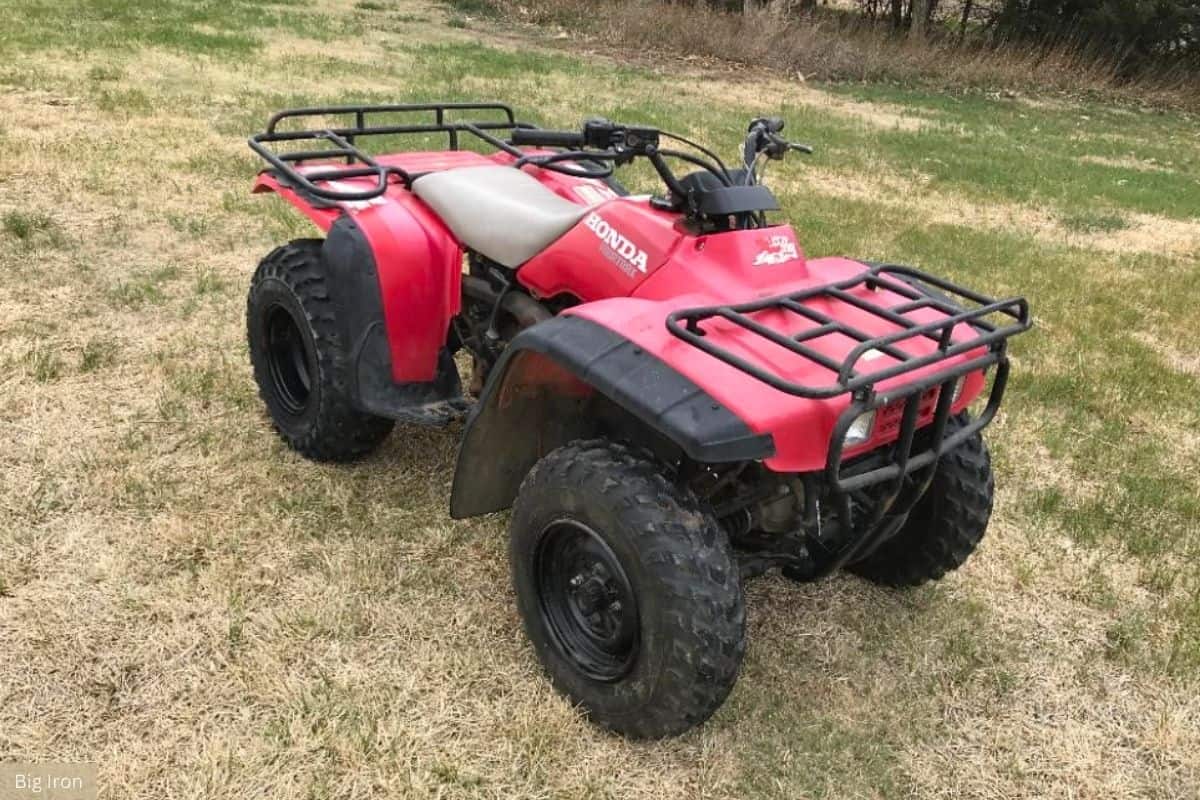The Honda FourTrax 300, also known as the TRX300, is one of the best-selling ATVs of all time.
First produced in 1988, the FourTrax 300 set the standard for reliability, performance, and versatility for years in the ATV market, with Honda selling over half a million units.
Its reputation for being a dependable workhorse made it a favorite among farmers, ranchers, and recreational riders.
In this complete guide, we’ll dive deep into the specifications and features that made the Honda FourTrax 300 stand out from the crowd.
From its bulletproof engine to its best-in-class reliability, we’ll cover every aspect of this iconic ATV.
History & Evolution of the Honda FourTrax 300

The Honda FourTrax 300, first introduced in 1988, has a rich history and has undergone an evolution over its production years.
Developed as a successor to the popular Honda FourTrax 250, the FourTrax 300 was designed to offer improved performance, handling, and utility.
At the time of its release, the FourTrax 300 set a new benchmark for mid-size ATVs, offering a powerful 282cc air-cooled, four-stroke engine, a five-speed transmission, and a reliable maintenance-free shaft drive system.
It also helped to solidify Honda as a premium ATV brand.
Throughout its production run, Honda made several key improvements to the FourTrax 300, ensuring that it remained competitive in the ever-evolving ATV market.
When compared to other ATVs in its class, the Honda FourTrax 300 consistently stood out for its reliability, build quality, and overall performance. Its closest competitors during its production run included the Yamaha Big Bear 350, Kawasaki Bayou 300, and Suzuki Quadrunner 250.
However, the FourTrax 300’s reputation for durability, ease of maintenance, and user-friendly build often gave it an edge over its rivals.
Throughout its history, the FourTrax 300 remained a favorite among ATV enthusiasts, thanks to its perfect balance of power, handling, and utility.
Even to this day, decades after Honda ended production on the FourTrax 300, riders are still seeking out this timeless ATV.
Honda FourTrax 300 Specs:
1988 Honda FourTrax 300 Top Speed Run
What Was the First Year of the Honda FourTrax 300?
The Honda FourTrax 300 or TRX300 was first introduced in 1988 and was the beginning of a 12-year production run for the machine.
When it was released, the FourTrax 300 set a new benchmark for mid-size ATVs, developed as a successor to the popular Honda FourTrax 250.
What Was the Last Year of the Honda FourTrax 300?
The last year of production for the Honda FourTrax 300 was 2000.
This means that the FourTrax 300 had a production run of 12 years, from its introduction in 1988 until its discontinuation in 2000.
Throughout its production run, the FourTrax 300 underwent several updates and improvements.
Despite these changes, however, the FourTrax 300 remained true to its core values of reliability, performance, and versatility, which contributed to its enduring popularity even after Honda stopped producing the four-wheeler.
How Much Does a Honda FourTrax 300 Cost?
Even though Honda produced over half a million Honda FourTrax 300s from 1988 to 2000, they can be very challenging to buy today, especially in good condition.
This is due in large part to the conditions a typical ATV is subjected to, which often include extreme off-road riding, farming, and other heavy-duty tasks.
Because of this, most have not survived, making it very difficult to find one that hasn’t been subjected to considerable wear and tear.
As a result, those in good condition are highly sought after, often commanding premium prices and selling quickly when they appear for sale.
So if you’re trying to buy one, you need to be diligent in your search and be willing to compete with other enthusiasts and collectors for the best examples.
To give you an idea of cost though, you can expect to pay anywhere from $2,000 to $5,000 on average for a used Honda FourTrax 300, depending on its age and condition.
That being said though, I’ve seen unmodified pristine examples sell for as much as new models.
Below are some of the best websites to check for Honda FourTrax 300s for sale:
Is the Honda FourTrax 300 2WD or 4WD?
The Honda FourTrax 300 was available in both 2-wheel drive (2WD) and 4-wheel drive (4WD) configurations when it was first introduced and throughout its production cycle.
However, as is the case with most ATVs, the 4X4 models, were always the most popular.
How Many Generations of the Honda 300 FourTrax Are There?

It’s generally accepted that there were two main generations of the Honda 300 FourTrax, however, some feel that there was a potential third.
- First Generation: 1988 to 1992
- Second Generation: 1993 to 1997
- Third Generation: 1998 to 2000 (Debated)
It’s important to note that there was some overlap between the 1st and 2nd generations in 1993, with some 1993 models being 1st generation machines.
In addition, some parts are interchangeable between generations, while others are not.
What is the Top Speed of the Honda TRX300?
The Honda TRX300 offers a top speed of approximately 45 miles per hour in optimal conditions on flat smooth ground.
Which is a pretty common top speed for ATVs of similar size and engine displacement.
Is a Honda FourTrax 300 2-stroke or 4-stroke?
The Honda FourTrax 300 (TRX300) is equipped with a four-stroke engine.
This design allows for a more efficient and complete combustion process and reduces the amount of unburned fuel and oil.
Honda has a long history of using four-stroke engines in their ATVs, motorcycles, and other power equipment.
The specific engine used in the Honda FourTrax 300 is a 282cc air-cooled, single-cylinder, four-stroke engine.
Does the Honda FourTrax 300 Offer a Reverse Gear?

The Honda FourTrax 300 (TRX300) is equipped with a five-speed manual transmission with an automatic clutch and reverse.
- On the 2WD FourTrax 300, the gearing is: R-N-1-2-3-4-5
- On the 4WD FouTrax 300, the gearing is: R-N-SL-1-2-3-4
*SL stands for: Super Low
How Big is the Gas Tank on a Honda FourTrax 300?
The Honda FourTrax 300 has a main fuel tank capacity of 3.3 gallons (12.5 liters).
In addition to the main fuel tank, the FourTrax 300 also has a reserve fuel tank with a capacity of 0.7 gallons (2.6 liters). The reserve fuel tank design allows for an additional supply of gasoline when the main fuel tank runs out, enabling the rider to switch to the reserve and continue riding for a short distance until they can refuel.
It’s important to note that the actual usable fuel capacity may be slightly less than the total tank capacity, as some fuel may remain in the tank and fuel lines even when the engine stops running due to a lack of fuel.
Riders should always keep an eye on their fuel level and refuel before the main tank runs empty to avoid running out of gas while on the trail.
How Do You Shift a Honda 300 FourTrax?
The Honda 300 FourTrax has a manual transmission with a semi-automatic clutch.
Here’s how you shift the Honda FourTrax 300:
Starting the ATV:
- Turn the key to the “on” position. The neutral light should be on.
- Ensure the kill switch is in the middle position.
- Use either the kickstart or the electric start button to start the engine.
Shifting through the gears:
- The FourTrax 300 has five forward gears.
- To shift up through the gears, simply click the foot shift lever upwards.
Engaging reverse:
- To shift into reverse, press and hold the reverse button (located near the shift lever).
- While holding the reverse button, shift the foot lever downwards.
- A red light will illuminate, indicating that the ATV is now in reverse.
Disengaging reverse:
- To shift out of reverse and back into neutral, simply click the shift lever up once.
As always, it’s important to refer to the owner’s manual for specific instructions and safety guidelines related to your particular model and year of production.
Honda FourTrax 300 Trail Riding & Mudding
Recent Posts
In recent years, off-road enthusiasts have been taking their adventures to the next level by installing UTV underglow lights on their side-by-sides. Which adds a unique visual appeal and improves...
Side by sides, also known as UTVs, are used by a wide range of outdoor enthusiasts from off-roaders to farmers to ranchers, and hunters. As these versatile machines offer a unique blend of...

